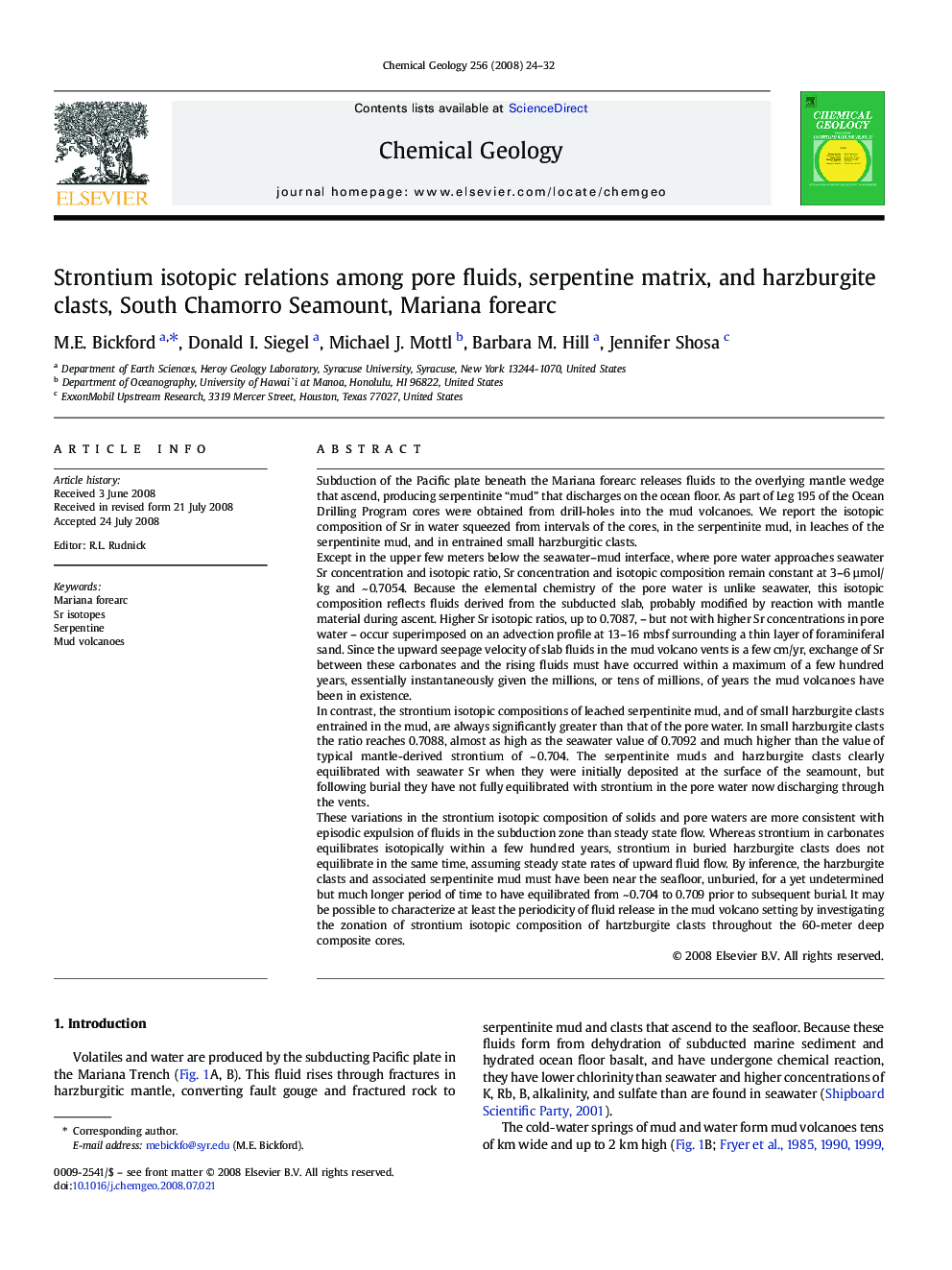| Article ID | Journal | Published Year | Pages | File Type |
|---|---|---|---|---|
| 4700457 | Chemical Geology | 2008 | 9 Pages |
Abstract
These variations in the strontium isotopic composition of solids and pore waters are more consistent with episodic expulsion of fluids in the subduction zone than steady state flow. Whereas strontium in carbonates equilibrates isotopically within a few hundred years, strontium in buried harzburgite clasts does not equilibrate in the same time, assuming steady state rates of upward fluid flow. By inference, the harzburgite clasts and associated serpentinite mud must have been near the seafloor, unburied, for a yet undetermined but much longer period of time to have equilibrated from ~Â 0.704 to 0.709 prior to subsequent burial. It may be possible to characterize at least the periodicity of fluid release in the mud volcano setting by investigating the zonation of strontium isotopic composition of hartzburgite clasts throughout the 60-meter deep composite cores.
Keywords
Related Topics
Physical Sciences and Engineering
Earth and Planetary Sciences
Geochemistry and Petrology
Authors
M.E. Bickford, Donald I. Siegel, Michael J. Mottl, Barbara M. Hill, Jennifer Shosa,
